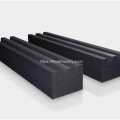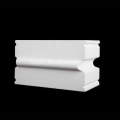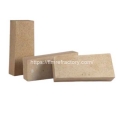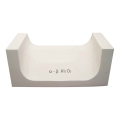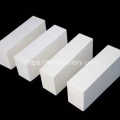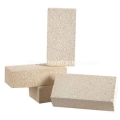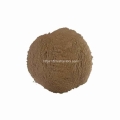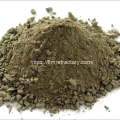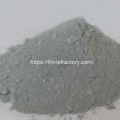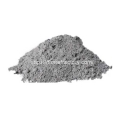- Performance. Innovation. Worldwide. Your trustworthy Refractories Manufacturing Partner--Fireramo
- +86 175 3769 7777
Contact
Contact us on WhatsApp
High Quality Refractory Bricks
Insulation Bricks for Sale
Monolithic Refractory
Usage status and shortcomings of refractory materials used in aluminum melting furnace
The molten pool of the aluminum melting furnace that is in direct contact with the molten aluminum is the most severely corroded by the molten aluminum. Traditional aluminum melting furnace pool generally use high-aluminum or clay refractory materials, which have lower quality and shorter service life. Refractory clay bricks are aluminum silicate refractory products with Al2O3 content 30% to 48% . It has good thermal shock resistance. The fire clay brick is weakly alkaline and has strong resistance to acidic slag erosion. However, Fireclay bricks are mainly composed of aluminosilicates, and the siliceous components in them are easily destroyed by reaction with liquid aluminum, so they were replaced by phosphate bonded high-alumina bricks. However, phosphate-bonded high-alumina bricks have poor wear resistance, and the pore size is large, about 22um. At around 1100°C, the phosphate decomposes to produce larger pores. The aluminum liquid can easily penetrate and react with the free silicon in it, thereby destroying the refractory materials.
The aluminum melting pool built by bricks has the problems of many brick joints, poor integrity and low strength. As the lining of the molten pool, the castable has no brick joints and good structural integrity, so it has high overall strength and has a longer service life than the brick furnace body. Therefore, the refractory bricks used in the aluminum melting furnaces are gradually replaced by castable materials.
At present, most of the castables used in the molten pool of aluminum melting furnaces are high-quality bauxite/corundum refractory materials. The Al2O3 content can reach 90%, and the corrosion resistance of liquid aluminum has been significantly improved. However, the high-cost refractory materials are still corroded by molten aluminum.
Methods to improve the service life of refractory materials used in the molten pool of aluminum melting furnaces
Based on the existence of damage factors of refractory materials used in aluminum melting furnace molten pools, It is very import to consider how to reasonably match the raw materials of refractory materials and optimize the mineral composition, as well as improve the microstructure of refractory materials to maximize the performance of refractory materials. According to the research and practical experience of refractory materials, when selecting refractory materials for aluminum smelting furnaces, the influence of various factors such as the strength, porosity and pore distribution of the refractory materials, and the addition of anti-aluminum wetting agents should be considered. Therefore, you mainly need to pay attention to the following aspects:
Use materials with higher corrosion resistance
The higher the Al2O3 content in the refractory material, the less likely it is to react with liquid aluminum, and the stronger its ability to resist penetration and erosion of liquid aluminum. Therefore, the Al2O3 content in refractory materials that contact with liquid aluminum directly is required to be above 75%. In addition, if the content of Na, K, Si and other impurities in the refractory material is high, when a corrosion reaction occurs and enters the aluminum liquid, the melting point and viscosity of the aluminum liquid will be reduced, thus promoting the corrosion. Liquid aluminum penetrates into refractory materials and accelerates the deterioration and damage of refractory materials. Therefore, the contents of SiO2, Na2O, and K2O in refractory materials for aluminum molten pools should be low.
Improve the resistance of refractory materials to aluminum wetting
Although the increase in Al2O3 content can reduce the penetration of aluminum liquid, the refractory material is still wetted by the aluminum liquid, and a chemical reaction occurs, causing the lining to crack, and then penetrates into the refractory material, aggravating the corrosion reaction. Therefore, to fundamentally solve this problem, the castables must not be wetted by the aluminum liquid, thereby reducing the penetration and erosion of the refractory materials by the aluminum liquid.
Reduce porosity
The porosity of the refractory material affects the penetration of the aluminum liquid into the refractory material. The lower the porosity of the refractory material, the less likely it is for the aluminum liquid to penetrate into the interior of the refractory material, thus reducing the erosion of the refractory material.
Improve the strength and thermal shock stability of refractory materials
In the aluminum melting furnace, due to the evaporation of certain alloying elements in the aluminum melt, high melting point oxides such as alumina and magnesia-aluminum spinel are easily formed and firmly adhere to the furnace lining. When these adhesions are removed mechanically, the furnace lining material will often be damaged. Therefore, the refractory materials must have high mechanical strength and hardness.
Specializing in refractory materials for over 20 years, we provide professional refractory solutions for the global high temperature industry.
Related Posts:
- Causes and solutions to cracking of castables after baking
- Enhancing the Medium Temperature Strength of Refractory Castables
- Ways to ensure the accuracy of refractory brick acceptance results
- Acceptance inspection after cement kiln construction
- Three Common Ways of Damage to the Sliding Nozzle for Ladles
Theme By Fireramo
